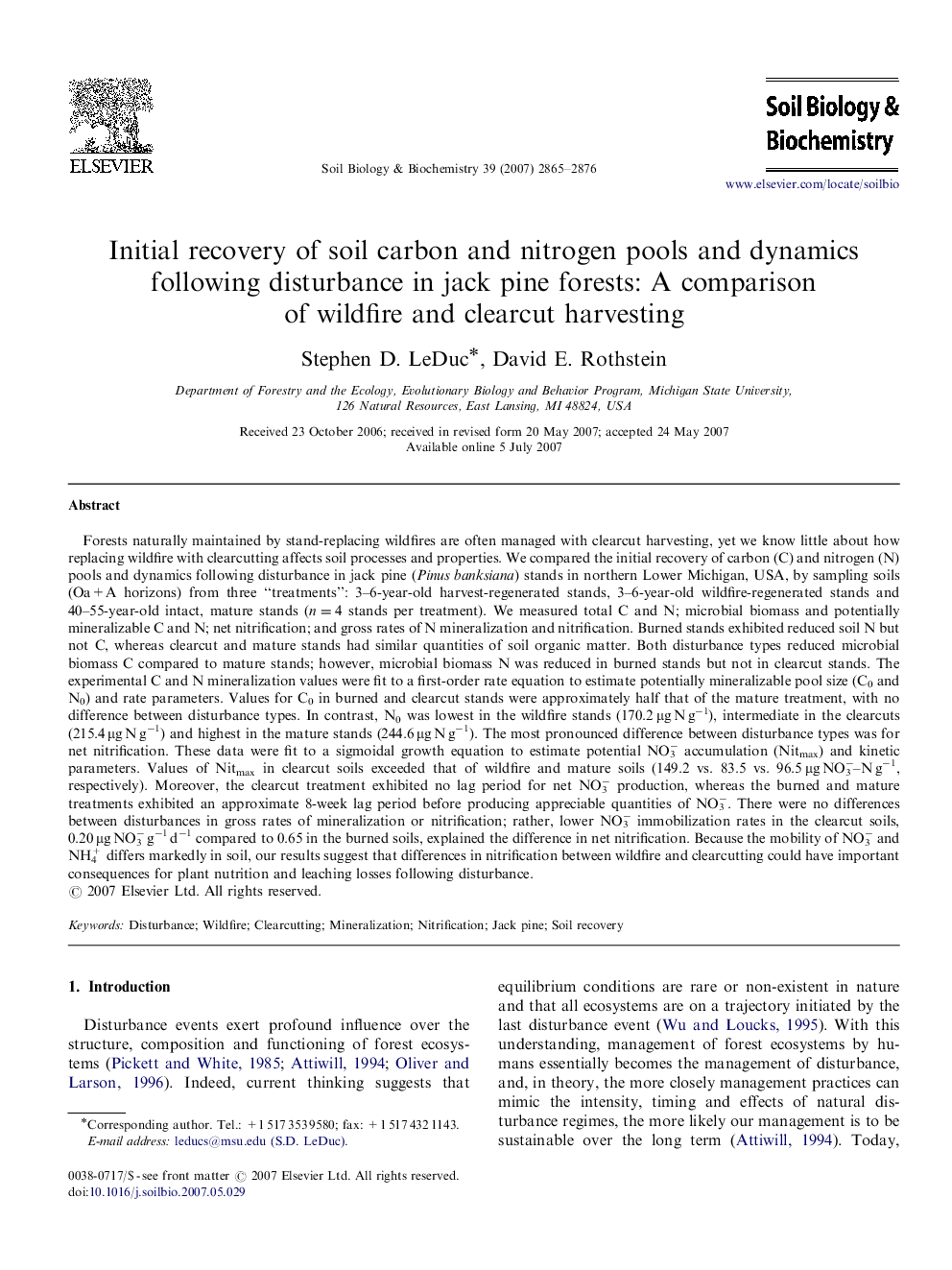| کد مقاله | کد نشریه | سال انتشار | مقاله انگلیسی | نسخه تمام متن |
|---|---|---|---|---|
| 2027035 | 1070075 | 2007 | 12 صفحه PDF | دانلود رایگان |

Forests naturally maintained by stand-replacing wildfires are often managed with clearcut harvesting, yet we know little about how replacing wildfire with clearcutting affects soil processes and properties. We compared the initial recovery of carbon (C) and nitrogen (N) pools and dynamics following disturbance in jack pine (Pinus banksiana) stands in northern Lower Michigan, USA, by sampling soils (Oa+A horizons) from three “treatments”: 3–6-year-old harvest-regenerated stands, 3–6-year-old wildfire-regenerated stands and 40–55-year-old intact, mature stands (n=4 stands per treatment). We measured total C and N; microbial biomass and potentially mineralizable C and N; net nitrification; and gross rates of N mineralization and nitrification. Burned stands exhibited reduced soil N but not C, whereas clearcut and mature stands had similar quantities of soil organic matter. Both disturbance types reduced microbial biomass C compared to mature stands; however, microbial biomass N was reduced in burned stands but not in clearcut stands. The experimental C and N mineralization values were fit to a first-order rate equation to estimate potentially mineralizable pool size (C0 and N0) and rate parameters. Values for C0 in burned and clearcut stands were approximately half that of the mature treatment, with no difference between disturbance types. In contrast, N0 was lowest in the wildfire stands (170.2 μg N g−1), intermediate in the clearcuts (215.4 μg N g−1) and highest in the mature stands (244.6 μg N g−1). The most pronounced difference between disturbance types was for net nitrification. These data were fit to a sigmoidal growth equation to estimate potential NO3− accumulation (Nitmax) and kinetic parameters. Values of Nitmax in clearcut soils exceeded that of wildfire and mature soils (149.2 vs. 83.5 vs. 96.5 μg NO3−–N g−1, respectively). Moreover, the clearcut treatment exhibited no lag period for net NO3− production, whereas the burned and mature treatments exhibited an approximate 8-week lag period before producing appreciable quantities of NO3−. There were no differences between disturbances in gross rates of mineralization or nitrification; rather, lower NO3− immobilization rates in the clearcut soils, 0.20 μg NO3− g−1 d−1 compared to 0.65 in the burned soils, explained the difference in net nitrification. Because the mobility of NO3− and NH4+ differs markedly in soil, our results suggest that differences in nitrification between wildfire and clearcutting could have important consequences for plant nutrition and leaching losses following disturbance.
Journal: Soil Biology and Biochemistry - Volume 39, Issue 11, November 2007, Pages 2865–2876